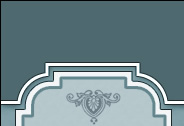|
History of the Regalia
of the Crown of France
The Regalia are an ensemble of objects
symbolizing Royalty. Each monarch had his own Regalia, often, with a legendary
history. These Regalia are preciously kept like treasures and they have been
added to in a successive way. They can be sorted into three
categories:
- Liturgical instruments
- Royal
clothes
- Coronation instruments
Up to the French Revolution, the Regalia of the kings
ofFrance were kept
in the Treasury of the Abbey of
Saint-Denis. The faithful engravings by Andre Felibien constitute an
important testimony. Several kings have deposited their crowns there.
The ancient Regalia
consisted of:
The Saint Louis Crown (in fact, The Holy Crown of France,
dated back to the Abbott Suger),as well as
the Hand of Justice,
Dagobert’s
Sceptre, the coronation Spurs,
and the Sword, referred to as Charlemagne’s
Sword,
Charles
V’s Sceptre, Guillaume de Roquemont’s staff,
Queen
Jeanne of Evreux’s Crown,
Henri IV’s
two Crowns, Sceptre and Hand of Justice,
Louis
XIII’s two Crowns, and Anne d’Autriche’s Crown, the large Clasp,
Louis
XIV’s two Crowns, the Holy Phial,
Louis
XIV’s coronation attire (coat),
Louis XV’s
two Crowns,
the
Chalice used for the coronation of kings,
the Goblet
of Ptolemees used as a chalice for the coronation of queens, and its serpentine
Paten,
the Book
of coronation, and the Books of gospels used for the coronation.
During the French Revolution, most of
the Regalia objects were melted down. Some rare pieces, as follows,
remained:
- The Sword, referred to as Charlemagne’s (Louvre Museum).
- The
Spurs used at the coronation (Louvre), Charles V’s Sceptre (Louvre Museum).
- Guillaume de Roquemont’s staff
(Louvre Museum).
- Louis
XV’s Crown in silver-gilt (Louvre Museum).
- The
Chalice of the Kings (Reims - Palais du Tau).
- The
Goblet of Ptolemees (Paris, Cabinet des
Medailles), and its serpentine Paten (Louvre Museum).
For his coronation
at Notre-Dame-de-Paris, on December 2, 1804, Napoleon the First had two sets
of Regalia reconstituted. They are:
- The Honors of Charlemagne:
Marechal
Lefevre was carrying the Sword
(“Joyous”, referred to as “Charlemagne’s” – Louvre Museum).
Marechal
Kellerman was carrying the Crown
(referred to as “Charlemagne’s, executed by Biennais -
Louvre Museum).
Marechal
de Perignon was carrying Charles V’s
Sceptre, which topped the “G. De Roquemont’s Staff” (Charles V’s –
Louvre
Museum).
Hand of Justice
(absent in David’s painting - executed by Biennais) (Louvre Museum).
- The Honors of Napoleon:
The Crown with the laurel leaves, all
in gold (one leaf remains, at the Chateau de Fontainebleau)
The Sword worn by Napoleon (chateau de
Fontainebleau)
The second consul, the
Archtreasurer Lebrun, was carrying the
Sceptre (topped with an eagle).
Chancellor Cambaceres was carrying the Hand of Justice.
Marechal
Berthier was holding the imperial
Globe.
Marechal Bernadotte was wearing the Great Necklace of the Legion of
Honor.
The Vice-King of Italy, Eugene de Beauharnais was holding the imperial Ring (emerald)
The
Grand Chamberlain Talleyrand was holding the container that would be used for the Emperor’s Coat.
Marechal Moncey
was holding the container that would be used for the Empress’ Coat.
The
“honorary” marechal Serurier was carrying the cushion that was to receive the
Empress’ Ring (ruby – Chateau de Malmaison)
Marechal Murat was carrying the
cushion for the Empress’ Crown.
Deposited at Notre-Dame Cathedral where
the public could easily come admire them, the Honors of the Emperor (crown with the laurel leaves, sceptre,
globe, hand of justice) were later removed in 1815, and melted down in 1819 (during the
Restauration) at the Monnaie de Paris. They resulted in a gold bar! It is a sad
end for the famous crown with the laurel leaves, blessed by the Pope, and with
which Napoleon crowned himself in Notre-Dame’s choir.
The coronation coat was
kept in Notre-Dame, but the canons tore it off in 1814, during the first
Restauration, in order to sell the pieces.
For his coronation, on May 29,
1825, in Reims, King Charles X used the Honors of
Charlemagne and also commissioned a set of important liturgic objects.
A
crown was made
by the jewelers Meniere and Bapst, for Louis XVIII, even though he was never
crowned, and was later re-designed for Charles X. (The crown was destroyed
through negligence in 1827)
The coronation instruments are being kept in
Reims, in the Palais du Tau. They consist
of:
The royal Coat for the
coronation, commissioned by Louis XVIII, used at the coronation of Charles
X. The large royal coat, made of purple velvet is ornated with flowers of
lily, and lined with ermine fur.
The
liturgical instruments used for
the coronation of Charles X are located in Reims, in the Palais du Tau. Most of the gilted objects
were executed by Jean-Charles Cahier (a student of Biennais) and consist
of:
- a Mace of the Chancellor of France, and its box - a monstrance - the Epistles -
2 trays with bread for offering, one made of gold and the other of
silver - 2 processional crosses - the reliquary of the
Holy Phial (topped with a dove) - 2 trays for the offertory
- a book of gospels - a larger ewer
- a box for the crown of the dauphin - a
smaller ewer - 2 censers - an altar cross - two thuribles - 2 acolyte candelabras -
a container for the Holy oils - a pyx for hosts -
a basin - two sets of altar cruets and tray - an Instrument of peace - 2 handbells
- the staff of the Grand Master of Ceremonies - the necklace
of the Order of the Holy Spirit (deposited by Monsignor the Count of
Paris) - 3 framed altar canons - a vial of Holy water with its bottle brush
- 2 chalices and patens, and an archiepiscopal cross.
Thanks : This
textbook has been translated into English by Mrs Maryvonne
Mavroukakis (Library
of Congress, Washington
DC)
| 
